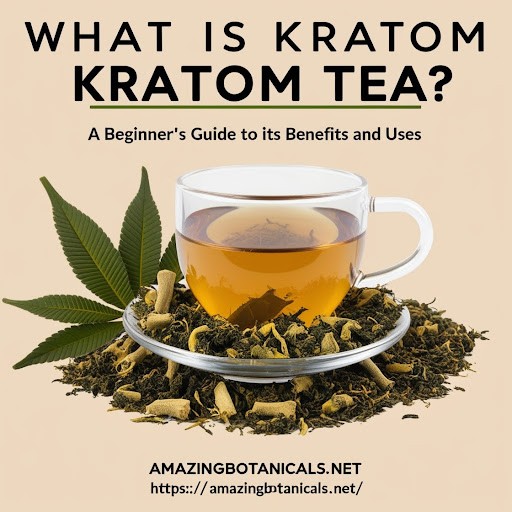Kratom tea comes from the leaves of the Mitragyna speciosa tree. It’s become popular recently because of its unique effects. This article will explain the different types of kratom tea, what they do, and how to make them safely. We’ll also talk about a special mix called trainwreck kratom and some important things to know if you’re interested in trying this drink.
Contents
Key Points About Kratom Tea
- Kratom tea comes from a tree that grows in Southeast Asia.
- There are three main types: red, white, and green kratom.
- Effects can include more energy, less pain, better mood, and relaxation.
- You make it by soaking kratom powder in hot water.
- Trainwreck kratom mixes different types for balanced effects.
- How much to take and how it affects you depends on the person and type.
- It’s not approved as medicine in many countries.
- It can have side effects and you might become dependent if you use it a lot.
- It’s not legal everywhere.
- Always start with a small amount and ask a doctor before trying it.
What is Kratom Tea?
Kratom tea is a drink that people have been making for a long time in Southeast Asia, especially in Thailand, Malaysia, and Indonesia. It’s made from the leaves of the kratom tree, which is related to coffee plants. People in these areas have been drinking it for hundreds of years because they think it helps with energy, mood, and pain. The stuff in kratom that makes it work is called mitragynine and 7-hydroxymitragynine. These chemicals interact with your brain, resulting in unique effects. Today, people experiment with various kratom strains and tea preparations to achieve desired effects.
Common Kratom Strains
Kratom strains are grouped by the colour of the veins in the leaves, which indicates their maturity and chemical composition. While general effects are associated with each type, outcomes can vary depending on growing conditions and individual physiology.
1. Red Vein Kratom
Known for relaxation and pain relief, red vein kratom is often used at night or after a busy day. Popular varieties include:
- Red Bali: Prominent for relaxation and pain relief.
- Red Maeng Da: Potent for pain relief with a slight energising effect.
- Red Borneo: Ideal for reducing anxiety and improving sleep.
2. White Vein Kratom
White vein kratom provides energy and alertness. Commonly used as a coffee alternative, it includes:
- White Maeng Da: Enhances energy and mood.
- White Thai: Improves focus and positivity.
- White Borneo: Energising yet calming for anxiety.
3. Green Vein Kratom
A balance between red and white strains, green kratom offers mild relaxation and energy. Popular types include:
- Green Malay: Long-lasting effects with mood enhancement.
- Green Bali: Provides mild pain relief and energy.
- Green Indo: Promotes clarity and slight pain relief.
Preparing Kratom Tea
Follow these steps for a proper preparation:
- Measure 1-5 grams of kratom powder (start small).
- Boil water and let it cool slightly (~190°F).
- Combine the powder and water in a cup; add lemon juice for enhanced extraction.
- Stir and let steep for 10-15 minutes.
- Strain the liquid if preferred, using a fine strainer or cheesecloth.
- Add honey or lemon to improve the taste.
Trainwreck Kratom: A Special Mix
Trainwreck kratom blends red, white, and green strains, aiming for balanced effects. Products like trainwreck kratom capsules are convenient options for those who dislike kratom’s bitter taste.
Effects and Considerations
Positive Effects:
- Increased energy and focus (white strains).
- Mood enhancement (varies by strain).
- Pain relief (red strains).
- Relaxation and anxiety reduction (red/green strains).
- Improved sleep (red strains).
Potential Risks:
- Nausea and constipation.
- Dependency with prolonged use.
- Dizziness or sedation (especially with reds).
- Adverse interactions with medications.
- Rare but possible liver issues.
- Breathing difficulties with excessive doses.
Is It Legal and Safe?
Kratom’s legality varies by region. In the U.S., it is federally legal but restricted in some states and cities. The FDA has not approved kratom for medical use, so quality and safety standards are inconsistent. Always buy from trusted sources with third-party lab testing.
Conclusion
Exploring kratom tea’s varieties—from relaxing reds to energising whites and balanced greens—can be fascinating for those interested in natural remedies. However, caution is essential. Start with small amounts, be aware of potential risks, and consult a doctor if needed. For high-quality products, consider Amazing Botanicals, prioritising safety and informed decisions when using kratom.
